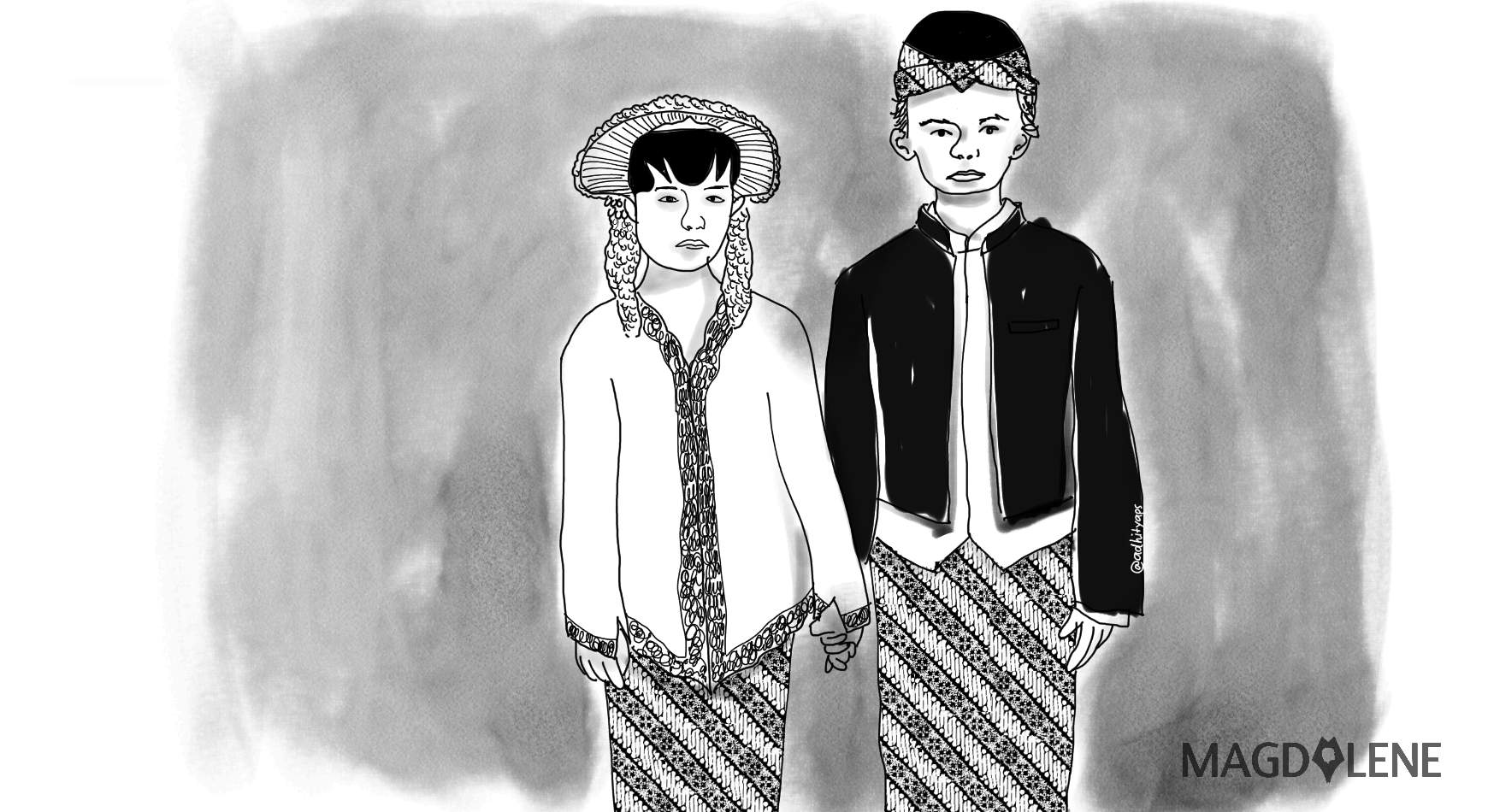On Dec. 13 last week, the Indonesian Constitutional Court (Mahkamah Konstitusi) made a decision that may open the door to the eradication of child marriage in Indonesia. The Court ruled that the 16 years old minimum age requirement for women to marry, as stipulated in the 1974 Marriage Law, was unconstitutional and lawmakers are given up to three years to revise the minimum age requirement.
According to a collaborative report on child marriage from the Indonesian government and UNICEF called "Progress on Pause”, an estimated 17 percent of Indonesian girls are married before the age of 18, placing Indonesia among the top ten countries with the highest absolute number of child brides, ranking seventh globally.
The ruling to revise the minimum marriage age stems from the Court’s decision to grant a judicial review petition filed by three child bride survivors from the Indonesian Coalition to End Child Marriage (Koalisi 18+.) The judicial review challenges Article 7 of the law, which sets the minimum age requirement for women to marry at 16, while on the other hand sets the minimum age requirement for men at 19. The difference in age requirement is found to be unfair and to resemble legally-endorsed gender inequality, as it puts women in a much more disadvantaged position than men.
The minimum age requirement of 16 itself is found to be legally contradictory to the 2002 Child Protection Law, which considers a person below 18 years of age as a child. In addition to this, the 2002 Law specifically stipulated on Article 26 (1c) that parents are obliged and subject to the responsibility to prevent child marriage. Following this flow of argument, the laws are contradictory and allowing female children to marry at the age of 16 is unconstitutional.
Apart from the legal argument, child marriage itself is notorious for its negative impacts to children’s mental, physical, social, and economic wellbeing; it is even regarded as human rights violation against children by the UNICEF. This claim is not unfounded, as a handful research have shown the real life effect of marriage on minors, and the majority of them are harmful not only to the child brides but also their offspring.
Physically, the anatomy of a 16-year-old girl is often not developed enough to survive pregnancy, leading to complication during pregnancy and at birth. According to the United Nations Children Fund, complication during pregnancy and at birth is the second largest cause for the death of girls aged 15-19 years. Additionally, infants whose mothers are below 20 years old have a higher chance of dying before the age of 28 days, compared to those whose mothers are aged 20 years and above.
On top of that, data have shown that women involved in child marriage are more prone to becoming victims of domestic violence. When lucky, child brides who can advocate for themselves will end up separating from their partners, which only leads to a higher divorce rate and often social shaming for being a widow at such a young age. The rest are doomed to stay in an abusive marriage their whole lives, with a higher chance of living in an economically unstable household.
The skyrocketing rate of domestic violence on child brides is explained by the psychological aspect of child marriage itself. Many of the child brides are still too immature to even understand what a marriage entails and the burden of being a wife and a mother at such a young age. Living far away from home, often without any financial capability or sufficient education, child brides are most likely dependent on their husband or their husband’s family and are therefore more prone to abuse due to their lack of bargaining power in the relationship.
Like a vicious cycle, oftentimes not only that the lack of bargaining power is caused by insufficient education, but child marriage itself leads to high rate of school dropouts. In Indonesia, data shows that child marriage causes young female to have four times the chance of not completing their secondary education. Without education, these young wives and mothers would be impeded from making informed decisions about countless aspects in their lives, ranging from their children’s wellbeing to even their own safety.
Economically, the lack of sufficient education among child brides also exacerbates the financial instability within their household which leads to poverty and the lack of proper nourishments for all family members including children. At the macroeconomic level, child marriage also hampers the overall economic development since it lowers the female labor participation rate. Child marriage in Indonesia is estimated to have caused 1.7 percent economic losses from the GDP.
The case of child marriage can be prevented through various means that often require collaborative effort between informal and formal institutions; the family, the community, religious institutions, schools, health institution, and, most importantly, the government must work together to protect children.
In this fight to eradicate child marriage, the government that holds judicative, legislative, and executive power is easily the most powerful stakeholder and the Constitutional Court’s order to revise the minimum age requirement for marriage is a critical opportunity for the government to use its power to spearhead the battle against child marriage.
Let’s hope next year our lawmakers will make the right decision to set the minimum marriage age to at least 18 years old, and will therefore put an end to the legal immunity for child marriage in Indonesia. It’s time.
Carrisa Tehputri is a Public Policy Researcher in the United Arab Emirates. She is passionate about gender, counterterrorism, and public policy.








Comments